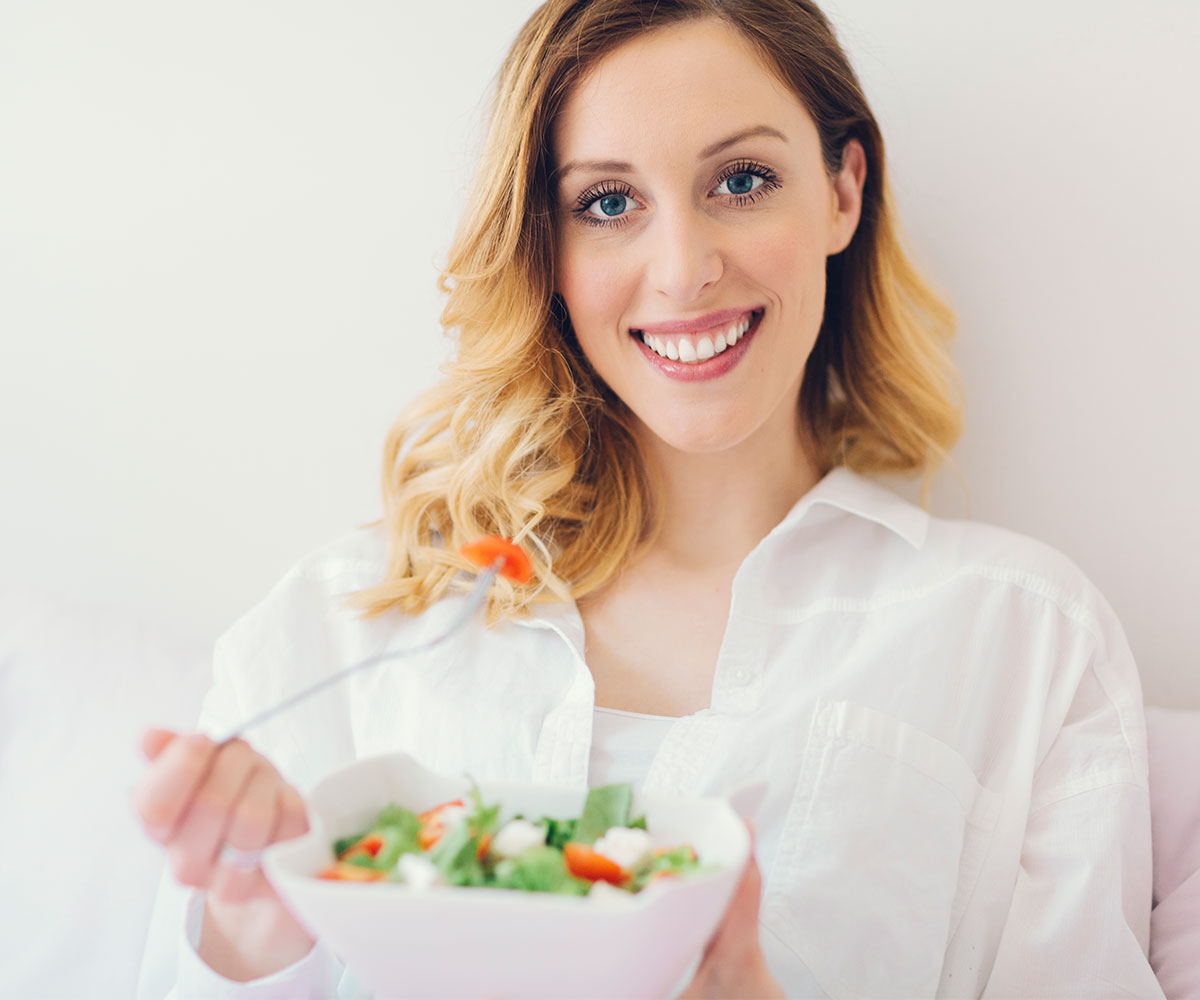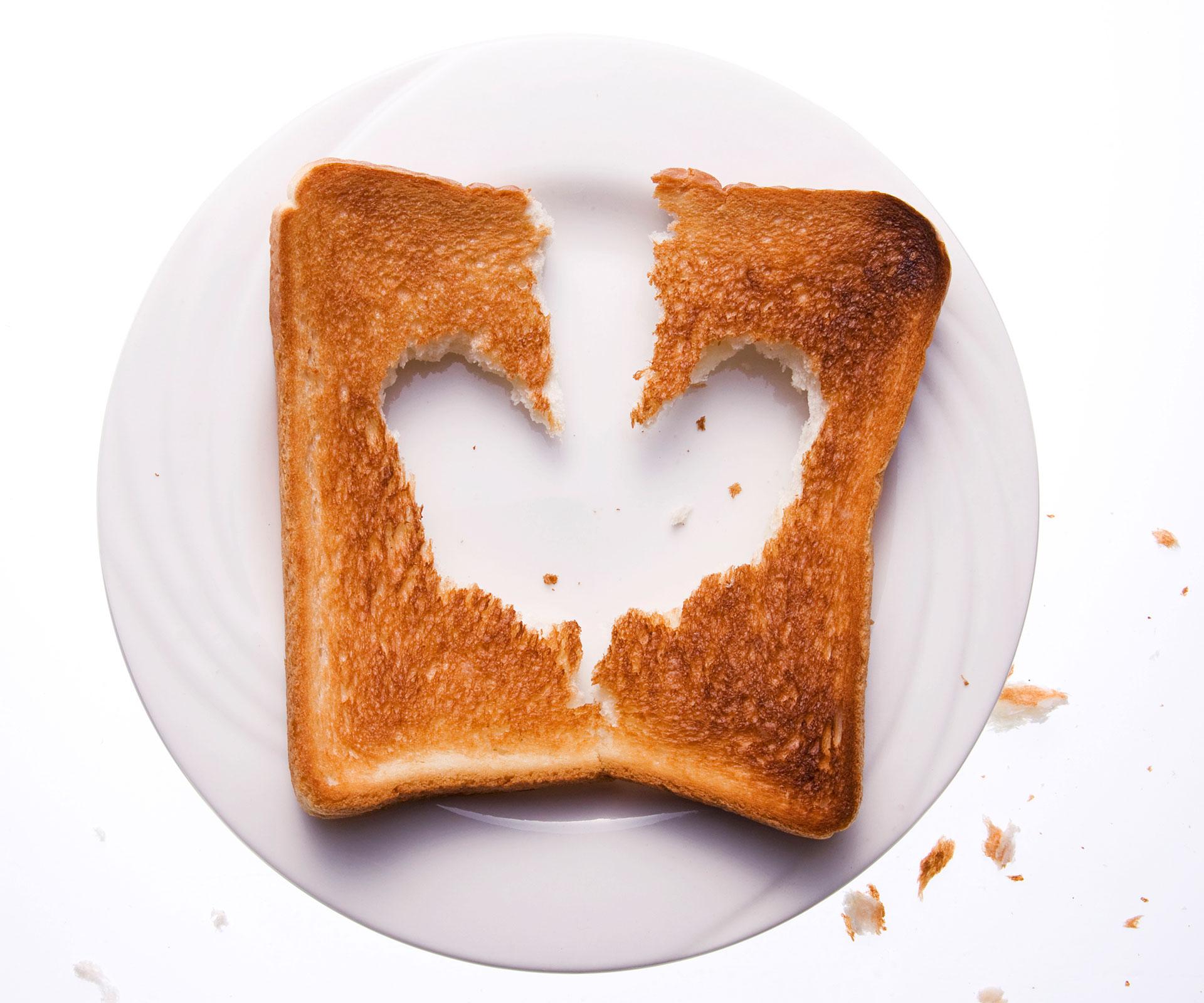Before my daughter was diagnosed as coeliac I didn’t realise how simple family cooking was. We cooked and ate pasta and pies and bread and burgers and pizza and wraps and biscuits and cake and cereal and sausages swimming in packet mix gravy without giving it a second thought.
Don’t get me wrong, there were always veggies and fruit and wholefoods, but my point is we didn’t have to think about what we ate as a family.
Now we have to think about everything we put on the table – because you don’t want to accidentally feed your coeliac daughter gluten when you’re cooking family meals. To me it also seemed insensitive to eat in front of her the things she could no longer have but loved.
Amy was diagnosed with coeliac disease five months ago after I started noticing she was eating a lot of ice. I took her to our GP to check if she was iron deficient because I’d read somewhere that people who are anaemic crave ice. I was also secretly worried that being the age she was – 15 years old – she might have had an eating disorder and was eating ice to mask her hunger.
The blood tests showed she was severely anaemic and our GP suggested she’d been this way for quite some time.
She sat us down and told us what she strongly suspected – that Amy was coeliac. We both burst into tears. What did it mean? Was this life-threatening? Where do we go from here?

The next step was to confirm our GP’s suspicions by booking Amy in for what our GP referred to as the ‘gold standard’ test for coeliac disease, a gastroscopy. Amy was referred to North Shore Hospital’s gastro department and tested a few weeks later, where it was confirmed. In that time she had to keep eating gluten so the test would give a true reading and that was terrible because I felt like I was poisoning my daughter.
Coeliac disease is a permanent autoimmune disorder that causes an intestinal reaction to gluten (gluten is found in wheat, barley, rye and oats and their many derivative products).
Imagine the lining of your intestine (or small bowel) as a thriving forest of little trees. Those trees, known as villi, are there to break down and absorb nutrients in food.
When a coeliac eats gluten the villi (forest) is flattened, and there’s nothing left to absorb the nutrients from your food. This can lead to vitamin and mineral deficiencies. Long-term damage to the bowel can lead to serious illnesses including bowel cancers.
After the hospital’s confirmation we went out and and bought Amy the last McDonalds burger she would ever eat. Then we set about educating ourselves on what her new diet would look like.

To be honest, it was daunting at first. The hospital had given me a list of ‘yes’ and ‘no go’ foods and that became my bible. There were so many foods we could no longer have in the house and Amy and I both had our meltdowns. She became frustrated and angry and would eat things containing gluten just to rebel. I began to feel like I was the only one trying to make this work and I got angry with her for not trying harder to get on board.
It was a friend of mine who is allergic to wheat and dairy products that helped set us back on track. “Instead of focusing on what she can’t eat, focus on what she can,” Cherie said.
She suggested we sit down together and write out a list of all the things Amy could have “because when you’re hangry you can’t think straight and you just need to be able to grab food without having to think about it”.
We did that and it feels like we’ve turned a corner. The list stays up on the fridge and it’s there as a reminder, both symbolic and practical, that we’ve got this.
Amy’s ‘snacks I can eat’ list includes:
popcorn
GF crackers with hummus or cheese or avocado
sushi
rice with veggies or chicken
toasties made with GF bread
wraps made with GF wraps
fruit
veggie sticks with dip
omelette
homemade wedges
GF home baking
GF mac n cheese
corn chips and salsa
GF sausages
hash browns
Heinz baked beans
GF falafels
GF pita pizzas
jelly
yoghurt
One of the first things I did after her diagnosis was go through my entire pantry and get rid of all the foods containing gluten that could accidentally be given to her during everyday cooking – flour in home baking; packet seasonings in mince dishes/casseroles/curries; readymade gravy mixes, curry spice pastes and sauces that were not GF.
I replaced the flour with GF flour (you can get self-raising too), the packet seasonings with spice mixes such as Moroccan spice, and the gravy mixes with GF ones. Some curry spice pastes are GF too.
I kept bread and pasta and breakfast cereals because they were obvious no-go foods, but set up a separate shelf in the pantry stocked with gluten-free pasta, bread, Weetbix, crackers, jelly, popcorn and other GF foods.
For a while I stopped buying ice cream until I discovered Tip Top ice cream is gluten-free. I’ve also discovered that GF biscuits can be crushed and mixed with melted butter to make great bases for sweet treats like cheesecakes. The longer we’re in this, the more inventive I am becoming.
My next step is to get Amy into the kitchen more because she’s going to have to be able to cook for herself and look after herself going forward. Having an understanding of cooking and what ingredients go into your food helps.
Something useful that Amy and I did after her diagnosis was visit the supermarket together and read food labels. We started with all the foods she loved then checked the labels on foods we regularly ate as a family then searched for gluten-free alternatives. We probably spent over an hour and this helped give us both a better understanding of what she could and couldn’t eat.
Coeliac New Zealand is a great resource for coeliacs and their families. The experts also suggest consulting a dietitian who can give you meal ideas and help clarify any questions you have about foods you’re not sure of.
Amy has been taking iron and vitamin C (to help with iron absorption) since her diagnosis and although our doctor says it will take up to a year before her stores are back to normal I have noticed that very recently Amy has stopped eating ice. She also seems to have a bit more colour in her cheeks and is not as irritable.

One in 70 NZers have coeliac disease but it’s suspected that up to 80 per cent of sufferers don’t realise they have it. If I hadn’t taken Amy to the GP for her ice eating god knows how long it would have been before we found out.
Because coeliac disease is hereditary the entire family has had to be tested and we’ve all just had blood tests done.
We miss being able to pop up the road for fish and chips when no one feels like cooking (Amy can’t even have the chips because they’re fried in the same cooking oil as the battered foods).
But cooking and supermarket shopping has become easier as time has gone on. As a family we’re eating a lot less gluten and we all feel the better for it.
While the initial news that your child is coeliac comes as a shock, you adjust – and cooking and eating together as a family does become easier again.
The common symptoms of coeliac disease in adults are:
• Diarrhoea – This may begin at any age and is often present for years prior to diagnosis. It may first appear after other illnesses (e.g. gastroenteritis) or abdominal operations
• Fatigue, weakness and lethargy
• Anaemia – iron or folic acid deficiency are the most common. The anaemia will either not respond to treatment or will recur after treatment until the correct diagnosis is made and a gluten free diet is commenced
• Weight loss
• Chronic constipation – some are more likely to experience constipation rather than diarrhoea
• Flatulence and abdominal distension
• Cramping and bloating
• Nausea and vomiting
• Osteoporosis (thin bones)
In children they are:
Symptoms do not occur until gluten is introduced into an infant diet – later onset is also possible.
• Large, bulky, foul stools
• Diarrhoea
• Chronic constipation
• Poor weight gain
• Weight loss in older children
• Chronic anaemia
• Poor growth or poor height gains
• Abdominal distension, pain and flatulence
• Nausea and vomiting
• Irritability


